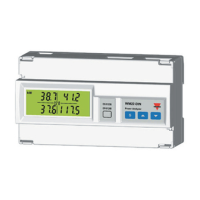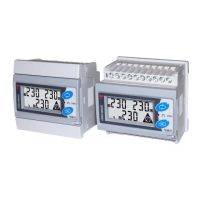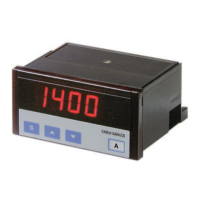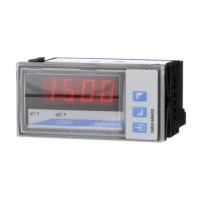59
▲
▲
Technical features
57
Energy Management
63
56
64
Additional errors
0 to ±10mADC, 0 to ±5mADC, 0 to 10VDC,
0 to ±10VDC, 0 to ±5VDC, 0 to ±1VDC.
• Scaling factor: programmable within the whole range of
retransmission; it allows the retransmission management of
all values from:
0 to 20mADC, 0 to ±20mADC, 0 to ±10mADC,
0 to ±5mADC, 0 to 10VDC, 0 to ±10VDC,
0 to ±5VDC, 0 to ±1VDC
• Response time: ≤200ms typical (filter excluded, FFT ex-
cluded, 3
1
/
2
dgt indication)
• Ripple: ≤1% according to IEC60688-1 and EN60688-1
• Temperature drift: 200 ppm/°C
• Load:
0 to 20mADC: ≤ 600Ω; 0 to ±20mADC: ≤ 550Ω
0 to ±10mADC: ≤ 1100Ω; 0 to ±5mADC: ≤ 2200Ω
0 to 10VDC: ≥10kΩ; 0 to ±10VDC: ≥10kΩ
0 to ±5VDC: ≥10kΩ; 0 to ±1VDC: ≥10kΩ
Insulation: by means of optocouplers, 4000 Vrms between
output and measuring inputs, 4000 Vrms between output
and power supply inputs.
RS422/RS485 SERIAL OUTPUT (on request):
• Type: bidirectional multidrop (static and dynamic variables).
• Connections: 2 or 4 wires, max. distance 1200m, termination
directly on the module.
• Addresses: from 1 to 255, key-pad programmable.
• Protocol: MODBUS/JBUS
Data (bidirectional):
Dynamic (reading only)
System variables: P,PAVG,S, Q, cosϕ, VL-L, f, THD energies,
status of digital inputs and status of the alarm output.
Single phase variables:
PL1, SL1, QL1, cosϕL1, VL1, AL1, THDL1, PL2, SL2, QL2, cosϕL2, VL2,
AL2, THDL2, PL3, SL3, QL3, cosϕL3, VL3, AL3, THDL3
Static (writing only)
All programming data, reset of energies, activation of the static
output.
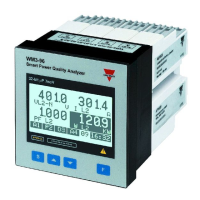
